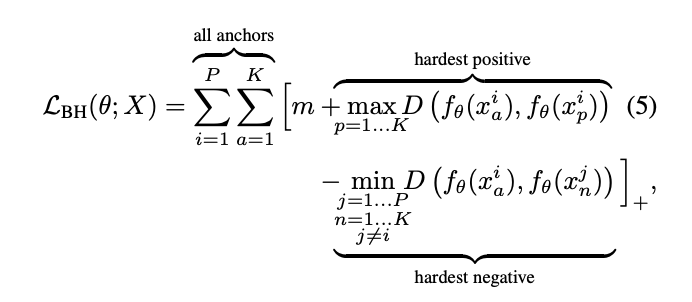HardNet model implementation in PyTorch for NIPS 2017 paper "Working hard to know your neighbor's margins: Local descriptor learning loss" poster, slides
We have added small shift and rot augmentation, which improves results up to 1mAP point on HPatches. It is in HardNet.py, turn on by --augmentation=True. All the weight will be updated soon. Version, which is trained on Brown + HPatches + PS datasets is in progress, stay tuned :)
Unfortunately, it is proprietary and we cannot release it. But you can try the following open source repos, both Matlab-based:
Benchmark on HPatches, mAP
| Descriptor | BoW | BoW + SV | BoW + SV + QE | HQE + MA |
|---|---|---|---|---|
| TFeatLib | 46.7 | 55.6 | 72.2 | n/a |
| RootSIFT | 55.1 | 63.0 | 78.4 | 88.0 |
| L2NetLib+ | 59.8 | 67.7 | 80.4 | n/a |
| HardNetLibNIPS+ | 59.8 | 68.6 | 83.0 | 88.2 |
| HardNet++ | 60.8 | 69.6 | 84.5 | 88.3 |
| HesAffNet + HardNet++ | 68.3 | 77.8 | 89.0 | 89.5 |
Please use Python 2.7, install OpenCV and additional libraries from requirements.txt
To download datasets and start learning descriptor:
git clone https://github.com/DagnyT/hardnet
./code/run_me.shLogs are stored in tensorboard format in directory logs/
Pre-trained models can be found in folder pretrained.
Rahul Mitra presented new large-scale patch PS-dataset and trained even better HardNet on it. Original weights in torch format are here.
Converted PyTorch version is here.
For practical applications, we recommend HardNet++.
For comparison with other descriptors, which are trained on Liberty Brown dataset, we recommend HardNetLib+.
For the best descriptor, which is NOT trained on HPatches dataset, we recommend model by Mitra et.al., link in section above.
We provide an example, how to describe patches with HardNet. Script expects patches in HPatches format, i.e. grayscale image with w = patch_size and h = n_patches * patch_size
cd examples
python extract_hardnet_desc_from_hpatches_file.py imgs/ref.png out.txt
or with Caffe:
cd examples/caffe
python extract_hardnetCaffe_desc_from_hpatches_file.py ../imgs/ref.png hardnet_caffe.txt
AffNet -- learned local affine shape estimator.
Please cite us if you use this code:
@inproceedings{HardNet,
author = {Anastasiya Mishchuk, Dmytro Mishkin, Filip Radenovic, Jiri Matas},
title = "{Working hard to know your neighbor's margins: Local descriptor learning loss}",
booktitle = {Proceedings of NeurIPS},
year = 2017,
month = dec
}








